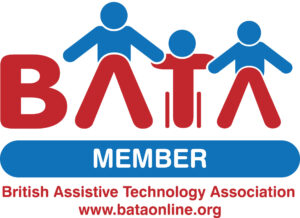How teachers can motivate reluctant readers
When a student dislikes reading, it’s usually the symptom of something else. Examples include students with SEN, such as dyslexia, who find reading extremely difficult, or children with a low reading age who feel frustrated at not being able to read age-appropriate books.
Here are a few ways to help you to help them.
Give children a reason to read
Ask them what their interests are. Think of reading materials that are relevant, in any format. Bear in mind that there are many children who don’t like fiction. How about a football-related website, a free menu card from a supermarket, a comic about a superhero, or a book about an animal. Charity shops are great places to look.
Choosing a book in a library
Libraries have no meaning or purpose for a student that does not want to read. The key is finding the right book.
- Help them to pick out a range of books. (Children say they prefer to pick books themselves)
- Sit with them to read the first page and maybe the description on the back then talk about whether it sounds interesting.
- If they don’t like it, ask why….do they not understand the words? Is it quite hard to read? Do they not like the storyline or content? This will help you work out which other books they will like!
Audio books
For children who are unable to read age-appropriate text, audio books can open up a new world of stories, and will improve comprehension skills whilst helping EAL students with their vocabulary. For example, a child might struggle to read the Hobbit. An audio book will allow them to enjoy the story, and at a later stage they are more likely to read the book for themselves.
Kindle
If possible, using a Kindle at home can really help. You can zoom-in on words, quickly see the meaning of an unfamiliar word and even change the background colour, making the words easier to read.
Support their decoding skills
Helping students understand how words are built; sound by sound, syllable by syllable, will make it easier for them to read. Decoding skills can be developed using various techniques such as ‘Air writing’ or creating images for letters, sounds and words. Don’t forget that you can also use computer products such as Wordshark.
Games
Reading and spelling games can be very effective – and fun. To provide the encouragement needed, make sure that there is always a level of success.
Check for any visual issues
You may suspect that a child has problems with their vision such as words moving on the page or becoming blurred. It’s worth trying coloured backgrounds to see if this makes reading any easier. If not, you could consider talking to the parents about an appropriate eye test that can diagnose these subtle difficulties.
Paired reading
There are useful strategies that can lessen the strain on the student and make it more fun to read. For example, ‘Paired reading’ can really help, with a regular reading buddy providing long-term support.
Get comfortable!
If children feel more at home, they will find it easier to relax and easier to enjoy reading. Consider a way for children to get more comfortable, such as taking off shoes and sitting on cushions.
Don’t give up on the uphill struggle
Some students just need help at the beginning. Others need continued support. Sometimes the approach you’re expecting to work, doesn’t! Whatever the challenges, don’t give up!
By Ruth Savery
Ruth is the education director at Wordshark. Ruth’s background/experience in education and social work make her highly experienced and knowledgeable on many subjects including SEN. In addition to her teaching role, she lead the way with whole school spelling competitions, ‘introduction to Secondary School’ days, managing the ‘worry wipers’ (responsible students helping out fellow students), and resolving tricky bullying issues in school. She shares her time between the ongoing development of Wordshark, and environmental/community charity work.







